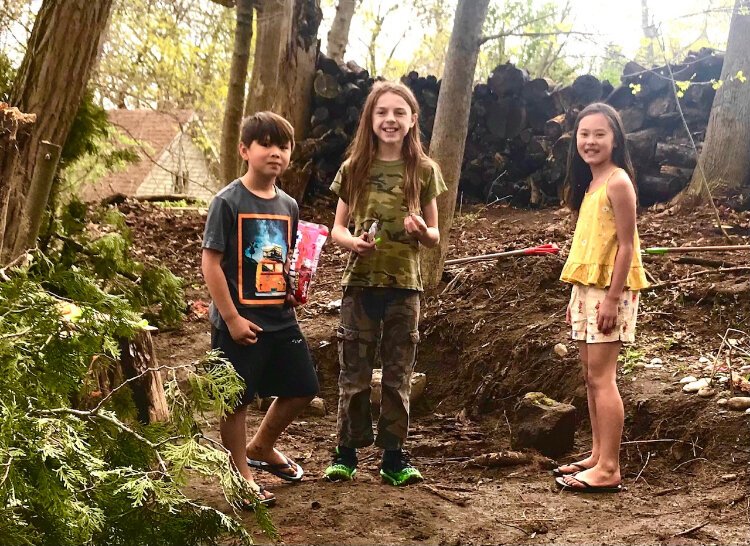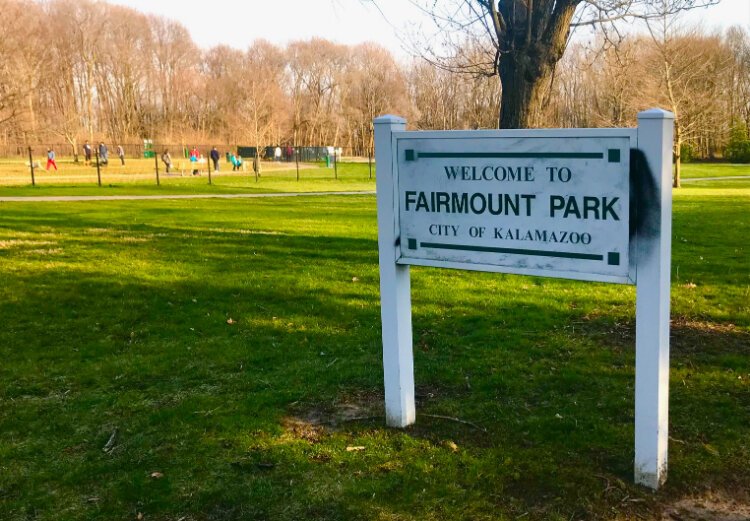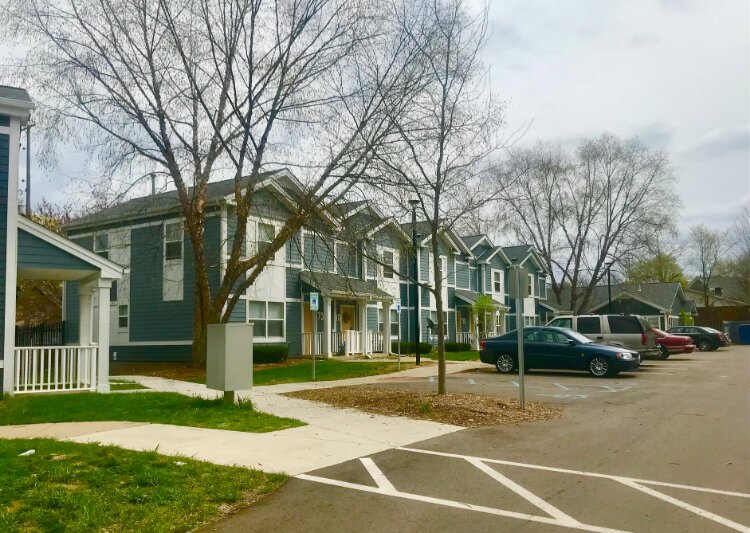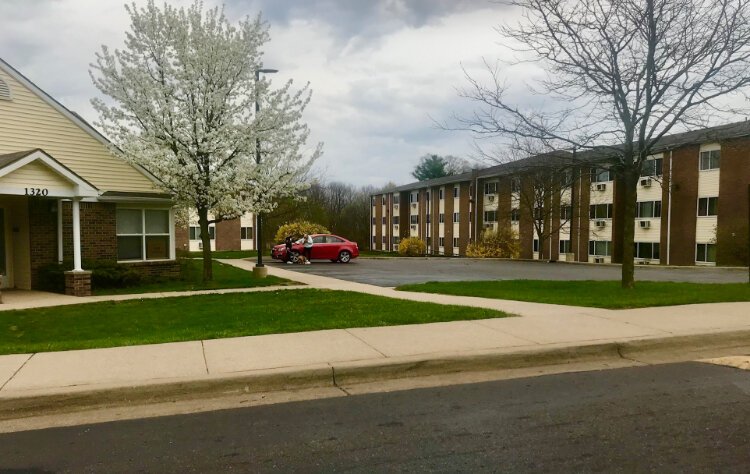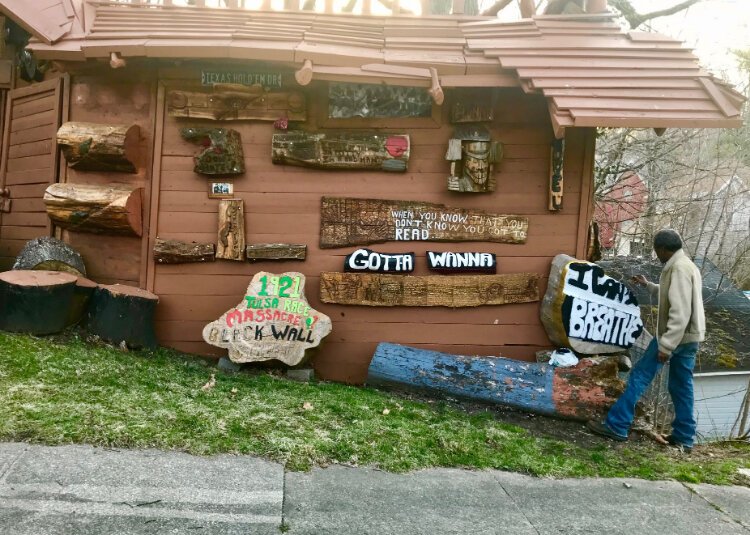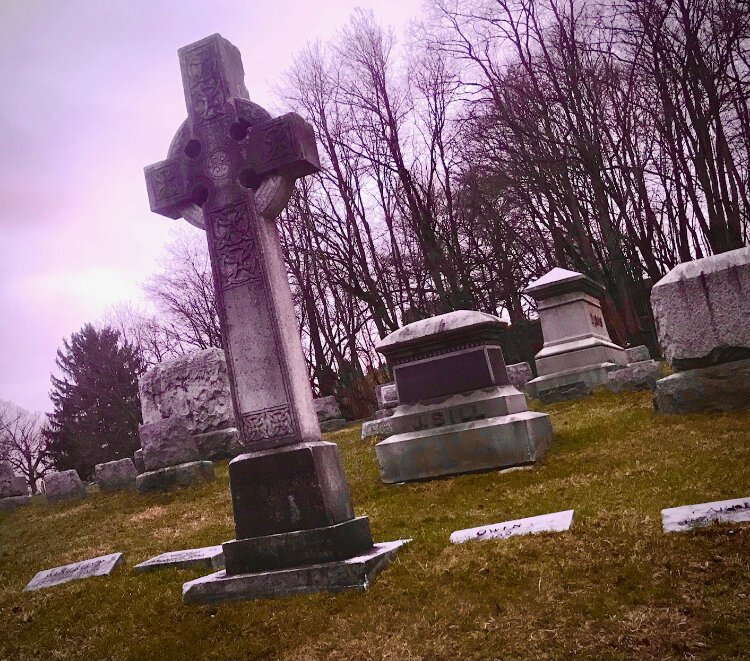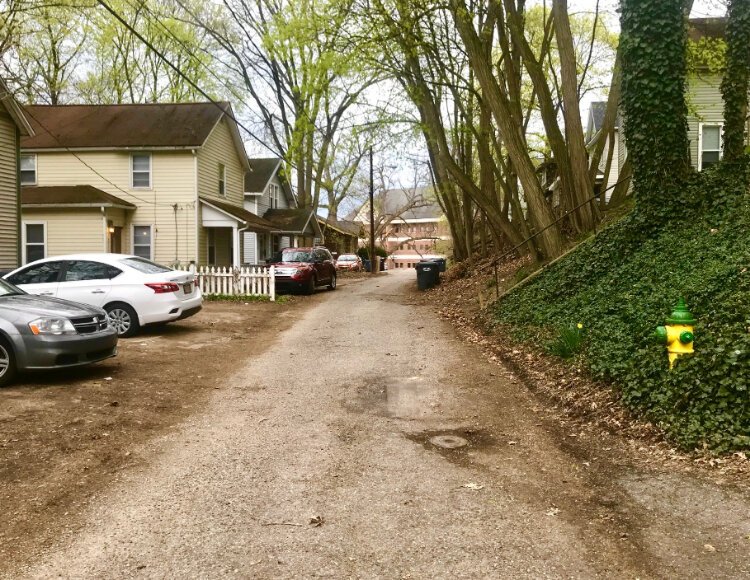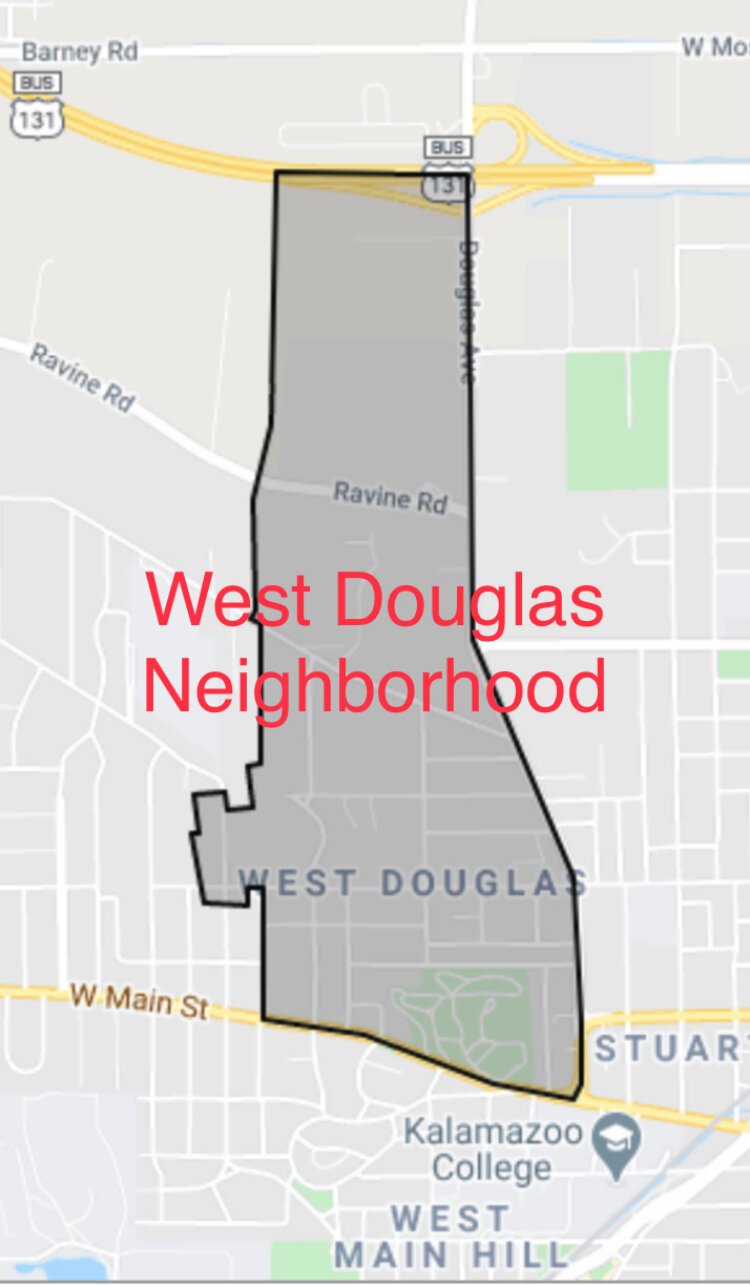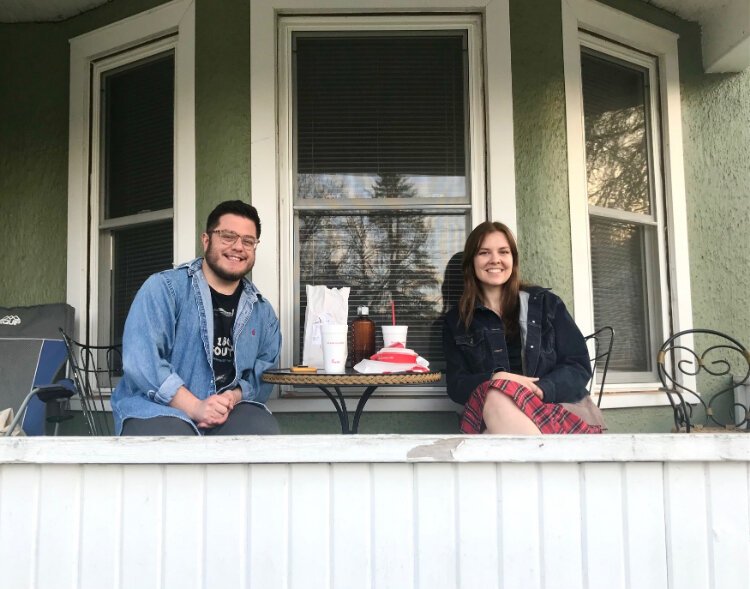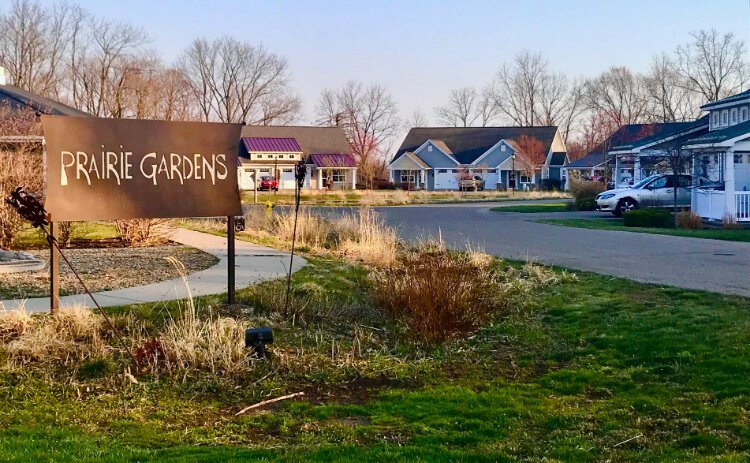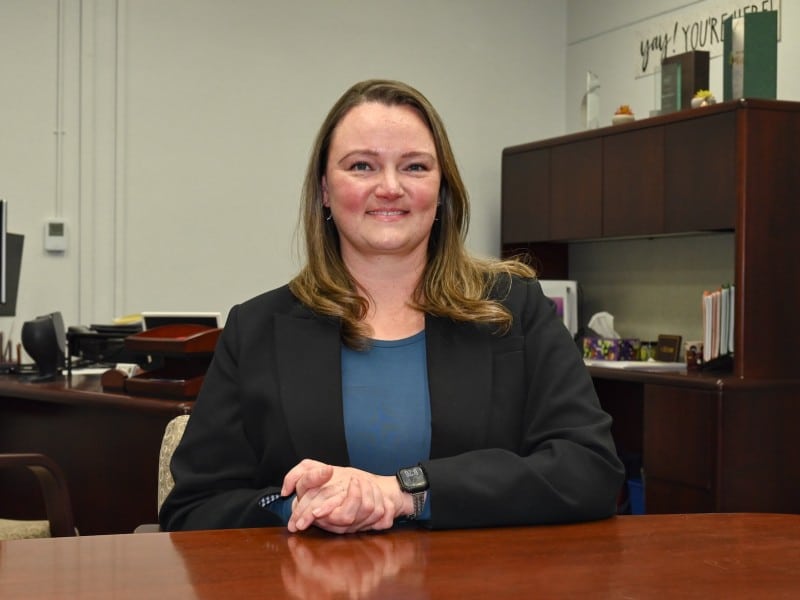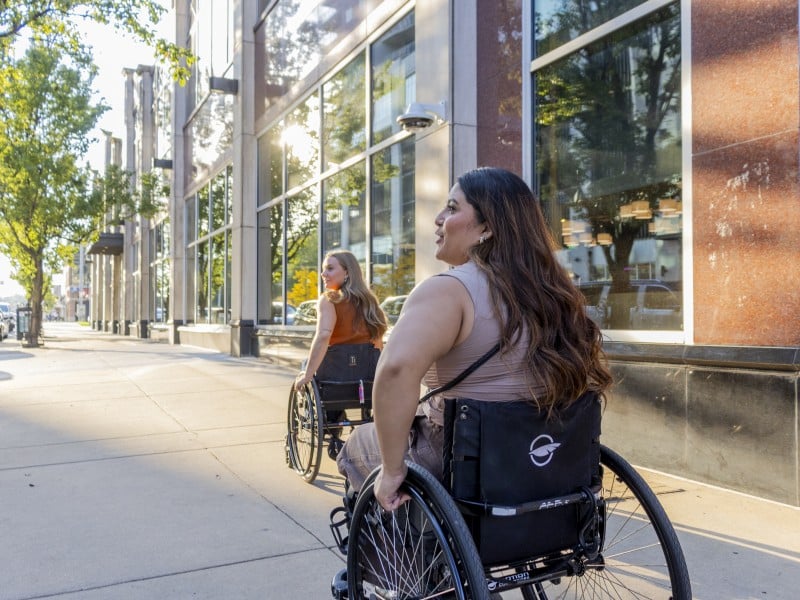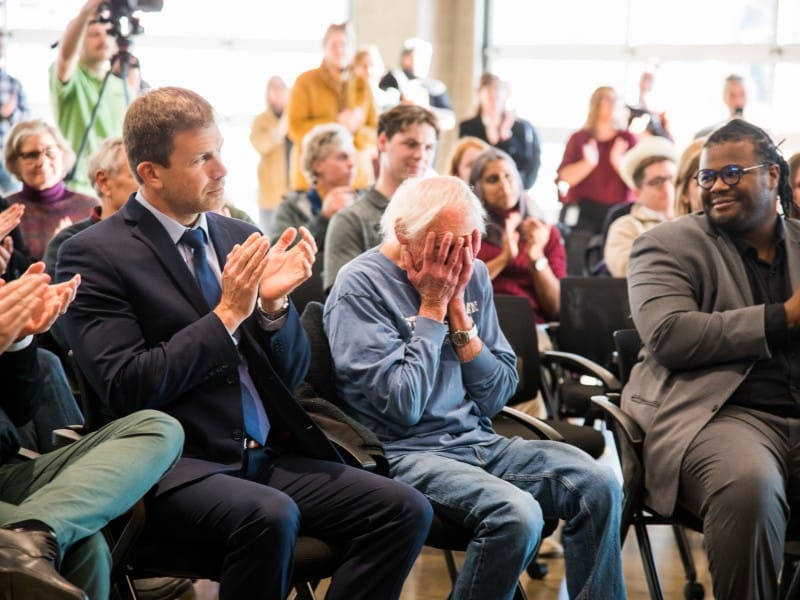A big-city mix of people and places thrive in Kalamazoo’s West Douglas Neighborhood
Take a tour up and down the hills of the West Douglas/Fairmont Neighborhood in Kalamazoo with On the Ground and see what the neighbors say are their favorite reasons for living there.
Editor’s note: This story is part of Southwest Michigan Second Wave’s On the Ground West Douglas/Fairmont Neighborhood series.
West and north of downtown Kalamazoo, people tend to like the bustling-but-casual, urban-but-secluded character of the West Douglas Neighborhood.
One of Kalamazoo’s smallest communities, it has space for people who like a big-city mix of people, cultures, and lifestyles as well as neighbors who like things quiet, well-maintained and friendly.
“It’s been fantastic,” says Matt Hills, who lives on Jefferson Avenue near busy Douglas Avenue but likes things quiet. He relocated to West Douglas from the Village of Lawrence in May of 2017 to be closer to his job with the City of Kalamazoo.
“It’s a quiet neighborhood,” he says. “I can’t really think of anything memorable happening and I think that’s probably a good thing.”
Hills says people in the area have been very respectful.
“It’s a good family neighborhood,” says Nicole Parker, who was looking to play with her 2-year-old niece on a recent day at Adda Dilts Peace Park when she learned the park was closed.
Although she now lives elsewhere, Parker says, “Our family has lived in the neighborhood for years.” And she says she enjoys having that connection with the community.

Adda Dilts Peace Park, located between Jefferson Avenue and Forbes Street, near Denner St., has been closed for months to prevent the spread of COVID-19. With a playground and basketball court, it is considered a community treasure. It provides a small but green place for youngsters to play safely and for adults to relax. It is owned by the Kalamazoo Meeting of the Religious Society of Friends (the Quakers), who invite the public to share and enjoy the grounds “with care and respect.”
The lay of the land
West Douglas gets its name and its long rectangular configuration (it is about three times as long — going south to north — as it is wide) from its eastern border, Douglas Avenue. The neighborhood is bordered on the south by busy West Main Street, and on the west primarily by Arlington Avenue and Warren Place. On the north, the neighborhood runs nearly up to the U.S. 131 Business Loop.
The neighborhood is strewn with interesting homes and comfortable places that are tucked away on streets that are not heavily traveled. And it has lots of smaller houses, some of which were used as rental homes over the years or sectioned into multiple apartments for students attending nearby Kalamazoo College and Western Michigan University.
It is within walking distance of downtown Kalamazoo, but is buffered from it by the Stuart Neighborhood, and sits just west of the Northside Neighborhood. Like both of those communities, it has a large number of older houses some of which are in need of repair. But its residential opportunities – from rental units to one-of-a-kind homesteads – make it attractive for young people getting started, first-time homebuyers looking for value, and seasoned homebuyers who enjoy neighborhood living close to downtown.
It was uphill growth
As transportation improved in the early 1900s and Kalamazoo grew in the late 1800s, so did West Douglas. Like Stuart and Northside, it was primarily land that was available for farming in the late 1800s. But its topography made that a challenge.
“It’s hilly,” local historian Lynn Smith Houghton says with a laugh. “When you have a street called Summit Avenue, I think it tells you what you’re dealing with right there.”
That resulted in some interesting home construction and narrow streets (“courts,” “places,” and “terraces”).
Land on the west side of Douglas Avenue between Main and North streets rises steeply to make for a long row of hillside homes on Ingleside Terrace. That narrow street runs parallel to Douglas Avenue and the houses look down onto the backyards and rooftops of houses on Douglas.
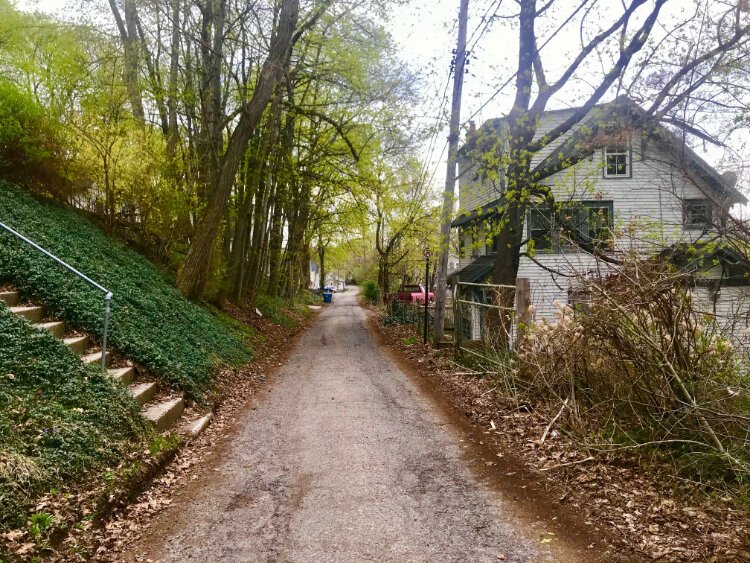
Good brakes and patience are needed for anyone hoping to park in some of its tiny driveways or escape oncoming traffic on busy Main Street. Good brakes are also a good thing to have on Prospect Place and streets adjacent to Mountain Home Cemetery. At the southeast corner of the neighborhood, between West Main and Forbes streets, the cemetery itself is different because of the area’s hilly features.
With origins in the late 1840s, Mountain Home Cemetery is a huge burial place that is a perfect example of what was called a garden or rural cemetery, according to Houghton. It follows the rolling hills and contours of the land. That makes for an interesting drive to see the huge tombstones that mark the final resting place for members of some of Kalamazoo’s earliest and most prominent families. Those include the Upjohns, Gilmores, and Fetzers, as well as Frank Henderson, builder of the nearby Henderson Castle, and Charles Stuart, the politician, and businessman for whom the nearby Stuart Neighborhood is named.
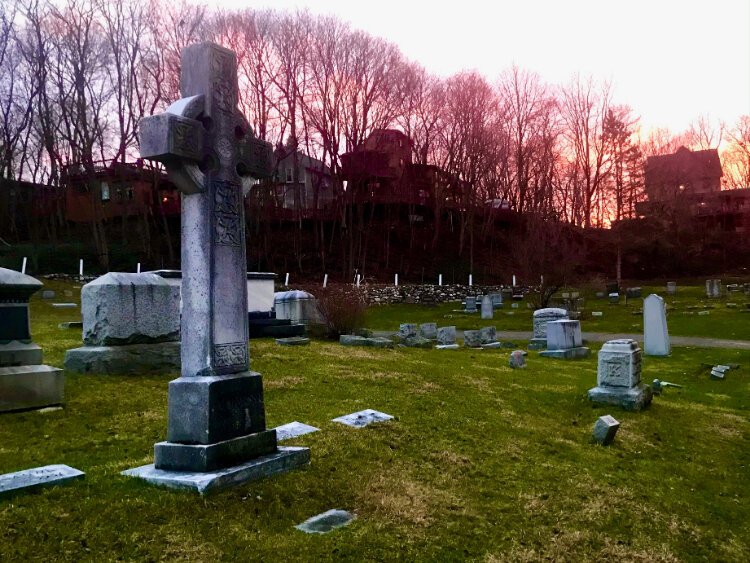
Mountain Home was a private cemetery before it was purchased in 1940 by the City of Kalamazoo. As a private space, anyone who wanted to buy a burial plot had to first join an association, which came at a cost, says Houghton, who is regional history collections curator for at Western Michigan University’s Zhang Legacy Collection Center.
Welcome to the neighborhood
West Douglas has become home to an eclectic mix of people, in terms of income, ethnicity, and lifestyles.
In 2016, the neighborhood had an estimated population of 1,644, according to City-Data.com. The median income was $51,381, about 27 percent higher than $40,441 for all of Kalamazoo. And the average value of a home was $77,701, compared to about $120,400 for homes citywide.
It also is a diverse neighborhood, according to City-Data.com. Its racial makeup is about 48 percent Black and 31 percent White. Eight percent of its residents are people who claim two or more races. About 7 percent are Hispanic or Latino, 4 percent are Asian and about 2 percent are Native American.
“We came here because it’s diverse,” says a woman who declined to provide her name. She says she and her wife relocated to Kalamazoo from a rural Western state where they found very little ethnic diversity, in order to live in a more diverse and urban setting.
Pointing to homes along Hilbert Street, she says, “That teen is biracial. That whole family is Black. Two more doors down is Black. They just moved in from Los Angeles. They’re Black. And the rest of us are White. And it’s a nice group.”
She says she likes that people fix up their homes and that there appears to be a growing trend toward more owner-occupied houses versus rental.
“They fixed up that house,” she says, again pointing to yet another neighbor’s home. “We put on a new roof. We have new siding on. They have a new roof on. It’s cool.”
A land of residential opportunity
“I would say West Douglas Neighborhood is pretty affordable,” says Realtor Twala Lockett-Jones. “The housing prices are going to be usually more expensive than Northside property but less expensive than Stuart Neighborhood.”
Hills says he bought his two-story, three-bedroom house four years ago for less than its appraised value. “And then we’ve got this great side yard and (I’ll do) a couple of repairs and I think I’m going to paint this summer,” he says.

According to information provided by the Lockett-Jones Realty Group, the median estimated home value in West Douglas is about $123,000. Nine single-family homes that were sold in the area since late 2020 ranged from a four-bedroom, 1,648-square-foot house on Jefferson Avenue that was built in 1900 to a four-bedroom, 1,515-square-foot house on Alamo Avenue that was built in 1890. Their closing prices were $149,000 to $189,000, respectively.
Four recently pending sales of single-family homes in the area included a three-bedroom, 1,007-square-foot house on Alamo Avenue listed for $110,000 and a three-bedroom, 1,150-square-foot house on Warren Place listed at $150,000.
Some of the new and old
Over the years, the neighborhood has seen large-scale housing and greenspace improvements at a couple of locations. They include the rehabilitation of the 33-unit Summit Park Apartments off Douglas Avenue at 1117 Summit Ave. Full Circle Communities, a Chicago-based nonprofit housing developer, bought the affordable housing development in 2019 and has been working to renovate its apartments and add amenities.
Originally built in 1999, Summit Park already had added a more modern and more affordable housing option to the area.
Fairmount Dog Park, is on a grassy hill that at different times was owned by the City of Kalamazoo and Kalamazoo County and, from 1914 to 1953, was the site of a hospital complex called Fairmont. On land bounded by Alamo Avenue, Denner Street, Blakeslee Street, and Prairie Street, it had treatment facilities for people with contagious diseases such as smallpox, diphtheria, and tuberculosis.
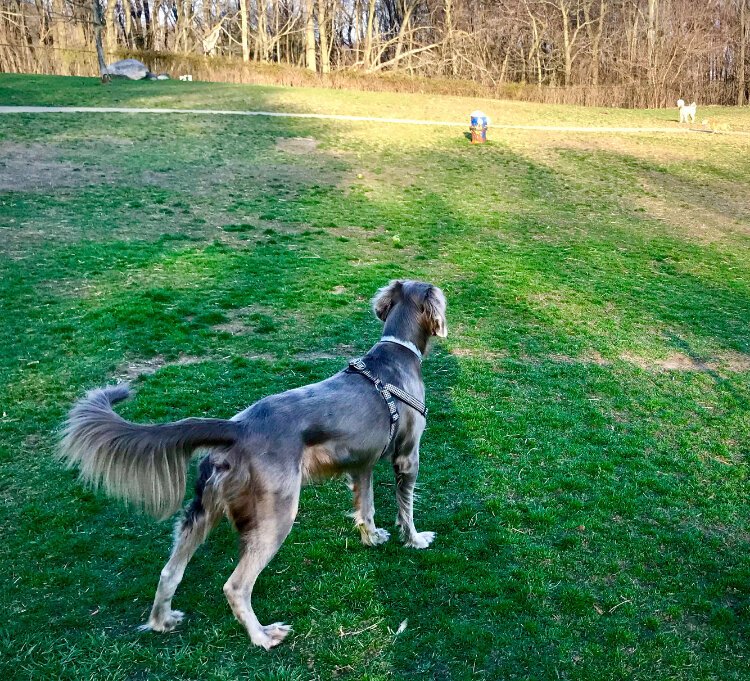
Just south of there, on the opposite side of Blakeslee Street, the state of Michigan built the Southwest Michigan Tuberculosis Sanatorium in 1954. The four-story, 45,000-square-foot facility was used to house patients from all over the state who suffered from tuberculosis. It was closed in 1969 after that ailment was all but eradicated. The property was taken over by the Michigan Department of Mental Health and turned over to the Kalamazoo Psychiatric Hospital, which was otherwise based on Oakland Drive, south of downtown Kalamazoo.
Called the Northwest Unit, the Blakeslee Street facility was closed in 1990 after patient counts shrank to 26 from about 120 in 1987, according to a history provided by the Kalamazoo Public Library. The property was acquired by Western Michigan University in 1998 but sat vacant for years after other plans for its use fell through. It became an eyesore and attracted vandals before it was demolished in 2011 and ownership was transferred to the Kalamazoo County Land Bank. The Land Bank was responsible for its redevelopment in 2013 into housing for senior citizens. It is now Prairie Gardens, a cluster of 32 residential units primarily for low- to middle-income senior citizens at 1501 Blakeslee St.
What’s best about the neighborhood?
“It’s nice,” Cole Boulette says of the West Douglas Neighborhood and the large, three-bedroom, two-bathroom house he has leased for the past year with two roommates at the corner of Forbes and Hilbert streets. After living in dormitories and in a student-heavy section of the Vine Neighborhood while attending Western Michigan University, he says, he is happy to live in quieter surroundings.
“We’re all either finishing school or in grad school,” Boluette says. “So we’re kind of quiet.”
But he regrets that he’ll leave the area soon, headed to Grand Rapids soon after he graduates.
Asked what she likes, Veronica Hughes says she likes to walk in the neighborhood.
Hughes, who is not fond of winter driving on Ingleside Terrace where she, her boyfriend, and their five young children have lived for less than a year, describes the neighborhood, saying, “Most people around here have dogs. It’s either old people and dogs or young people and kids.”
She says, “I like to walk in the neighborhood. It just looks pretty. It’s nice to walk in. It’s peaceful. And it’s in walking distance of some parks.”
Residents also say they enjoy visiting Cookie’s Restaurant and Creole ‘N Soul, two eateries at 712 and 702 Douglas Ave., respectively. They sit at the confluence of the West Douglas, Stuart, and Northside neighborhoods, but are actually part of the Northside Neighborhood.
West Douglas has its own interesting mix of businesses, including Daysha’s convenience store, Harper Funeral Home, Chapman Automotive, A.M. Todd Co., K-Zoo Skate Zoo, Weller Auto Parts, and Tiffany’s Wine & Spirit Shoppe. Tiffany Village, a small shopping plaza at the top of West Main Street hill, is home to Tiffany’s Wine & Spirit Shoppe and has four restaurants in total as well as a beauty supplies store, and a clothing shop.
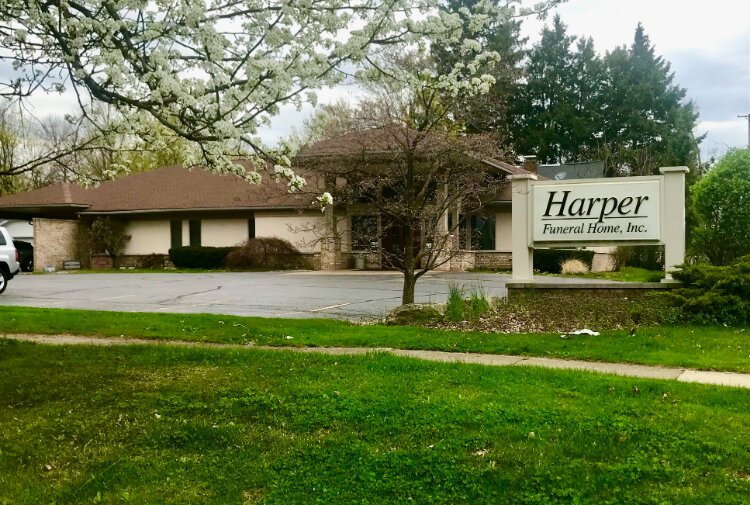
Born and raised on the Northside, with a few years of living on Kalamazoo’s Eastside, Von Starling, 29, says he doesn’t differentiate between Kalamazoo’s core neighborhoods.
For example, Starling considers the Summit Park Apartments off Douglas Avenue at 1117 Summit Ave. to be a part of the Northside Neighborhood though it is in the West Douglas Neighborhood. The apartments are just north of the intersection of Douglas Avenue and North Streets. That is the confluence of the Stuart, West Douglas, and Northside neighborhoods.
Stuart includes everything southeast of the intersection. Northside includes everything northeast of the intersection. And West Douglas includes almost everything along the west side of Douglas Avenue, from Main Street to the U.S. 131 Business Loop.
“As long as everybody takes care of each other for the most part, and don’t have no outside people coming in messing around, we’re good,” Starling says. He shook his head while talking about outsiders causing problems.
Starling’s younger brother has lived at Summit Park Apartments for the past three years with a girlfriend and their three children without problems.
“Overall, it’s cool as long as everybody minds their business,” he says.

